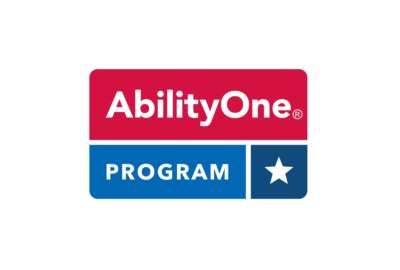A fresh federal effort at reducing homelessness
"We basically work as a coordinating body to make sure that the administration's homelessness strategy coordinated is effective," said Jeff Olivet.
Few problems seem as intractable as homelessness. Get one person into housing, and two more end up under a bridge. Now the U.S. Interagency Council on Homelessness plans a fresh run at prevention, with what it calls its first-ever prevention framework. The council’s Executive Director, Jeff Olivet joined the Federal Drive with Tom Temin to discuss more.
Interview transcript:
Tom Temin Let’s start with the council itself. I have to confess, I didn’t know there was a U.S. Interagency Council on Homelessness. Tell us who’s in it and how everybody gets together.
Jeff Olivet Thanks for starting us at the beginning here. The U.S. Interagency Council on Homelessness is an independent federal agency that is comprised of a council of 19 member agencies. So we basically work as a coordinating body to make sure that the administration’s homelessness strategy coordinated is effective. We work closely with the White House Domestic Policy Council. Members of our council include HUD, the VA, HHS, Labor, Education, Transportation, Social Security, FEMA, and many, many others. And all of those agencies touch homelessness, but no single agency is responsible for homelessness. That’s our job.
Tom Temin And that brings up an important, I guess, quality, if you will, of homelessness. Sometimes it can be disaster caused and people that were housed are unhoused. There might even be some now in the Asheville environs in North Carolina. And then there are the chronic people, veterans with mental issues and so forth that fall outside of the emergency situation, but have that chronic quality. Fair way to characterize it?
Jeff Olivet There are so many pathways into homelessness Tom, and people’s individual sense of issues, challenges, experiences are very different. I think you’re absolutely right in calling out natural disasters as a cause. We also know that the housing market is a tremendous cause of homelessness, that people just get simply priced out and can’t afford it. We know that there is an intersection with domestic violence, mental illness, addiction, trauma, child welfare systems. And so if you understand homelessness as a multi-system failure, then we need to work with all the systems to solve it.
Tom Temin And what are some of the statistics recently that we know about? At one time the Veterans Affairs, I think, used to get together with HUD and go out and count heads on the streets. Do we have a good handle on how many people and where they are?
Jeff Olivet There is an annual point in time count that every community around the country does, and that gives us a snapshot in time. It does not give us the full scope of who’s moving in and out of homelessness through the course of a year. But at least as a snapshot prior to the pandemic, the numbers were increasing gradually year over year. During the pandemic, a lot of what we did worked. The expansion of the child tax credit, the massive infusion of funding in emergency housing vouchers, emergency rental assistance. Those things really worked. And what we saw was a leveling off of those numbers between 2020 and 2022. As a lot of those resources have been expended, we’re now seeing the numbers climb in many communities the last year or two.
Tom Temin And as you point out, I think in the opening summary of the framework which we’ll get to, you put someone in housing, and then two more do end up unhoused. And often those that end up in housing don’t stay. And so they’re back on the streets, there’s a revolving quality to it that’s that’s difficult.
Jeff Olivet If we can move people into housing as quickly as possible and provide really good wraparound supports, that combination of housing and supports, we actually see very good housing retention. It’s one we don’t always have those supports in place or they’re hard to fund, that’s when sometimes the returns to homelessness happen. The essential piece, though, is to pair that with an upstream prevention effort the stems inflow into homelessness. So we’ve actually gotten much better. We see this in communities across the country. We’ve gotten much better at helping people exit homelessness. We see hundreds of thousands of people each year moving out of homelessness. What the public sees, though, is homelessness is still there, and in many communities it’s getting more visible and it’s growing. And they think nothing’s working. And that’s not actually true. We’re seeing successes every day. We’re just seeing a whole lot of new people become homeless.
Tom Temin And is it difficult to deal with municipalities who are simply frustrated with this and take the proverbial fire hose to clean up encampments that might be under bridges or on hillsides, this kind of thing, without really thinking about it comprehensively.
Jeff Olivet Local governments, city, county, even state governments are under tremendous pressure to solve this problem, and they don’t always have the resources to do it. We’ve not, I think, appropriated enough funding at the federal level to get down to the community level. Local and state budgets are stretched very thin right now as we’re coming out of the pandemic. And so I’m sympathetic to the pressure that local elected officials are under. But what we know works is to get people into housing, get people into mental health care, get people into the supports that they need. And so when communities just simply clear an encampment with no plan for those folks. That doesn’t solve anything. It just actually moves the problem around, makes it worse. In worst cases, we see communities criminalizing homelessness where they’re finding and arresting people and serving them or jail time. That’s counterproductive. It’s expensive and doesn’t make any sense. So we’re working with communities to do what works and to minimize what doesn’t work.
Tom Temin We are speaking with Jeff Olivet. He is executive director of the U.S. Interagency Council on Homelessness. And you now have a framework for prevention. Tell us what’s in it and we’ll get into how that got developed.
Jeff Olivet Over the last several decades, there’s been a lot of work around helping end homelessness once people are already there. There’s not been as much done nationally around going upstream, around stemming in flow, around shutting the front door, whatever metaphor you want to use. And so what we have done is to create a federal prevention framework that’s a signal to the field that it’s just as important to focus on prevention. We’ve also tried to fund good programs through the Department of Justice and HUD, and others that are beginning to stabilize people where they are before they become homeless. So the framework was a collaboration between HUD, Health and Human Services, the VA, USICH and other federal agencies to say, first of all, prevention is important. And secondly, there are kind of levels of prevention. There are certain ways to stabilize households before they get into crisis. There are other interventions that we can do if people are in imminent risk of becoming homeless but haven’t become homeless yet. And there are other things that we can do around diversion once people kind of present at the shelter for a place to stay. The question is what can we do to keep them in housing in the community so they don’t fall into the homelessness system?
Tom Temin And what are some of the elements? It sounds like this would be something that needs to be administered at the local level more so than at the federal level.
Jeff Olivet That’s right. Policy gets out at the federal level. The real intervention happens at the local level. And we’re seeing some real bright spots around this. We’re seeing bright spots around youth homelessness prevention in the first year or two after young people age out of foster care. We’re seeing reentry programs when people have been incarcerated in jail or prison. And instead of ending up on the streets or in shelters, we’re seeing programs get put in place that get people right into housing that kind of assess risk of homelessness well before the day that somebody is released. We’re seeing really promising activity around flexible funding pools. And what I mean by that is that a locality might have some local money, some philanthropic dollars, maybe some federal money that go into a flexible funding pool that can help people with a $300 an car repair so they can keep their job or help people pay a couple of months of back rent so that they don’t get that eviction. So we’re seeing a lot of bright spots around the country. The question is, how do we hold those up? How do we replicate them? How do we fund them at a national level?
Tom Temin So at the state level, they almost or the local municipal level, they kind of have to replicate the interagency approach at the federal level because you mentioned stabilizing households. That can mean there could be abuse going on in a household. So that may be a social service agency or even the police might know of a potential cause of homelessness that can be prevented. And so you have to have some kind of a communications system with that as the focus among local agencies, I would think.
Jeff Olivet That’s exactly right. You want local agencies talking to each other. You want everybody who might have contact with people who are homeless or at risk of homelessness working together. That includes health care systems, education systems, child welfare, criminal legal system, the law enforcement sector, nonprofits, faith community, business community. And where we see the most effective responses, it’s where those groups are talking together, where they come together around a strategy. They’ve set shared goals, they’re around the same table working towards common solutions. And we do see that in a lot of communities at the local level and also at the state level. We see state interagency councils in places like Illinois and Minnesota and California that are really doing good coordination work.
Tom Temin And by the way, this is not strictly an urban problem, is it?
Jeff Olivet Not at all. We see tremendous numbers of people experiencing homelessness in rural areas, often it’s a little less visible. It’s people doubled and tripled up living in substandard housing with no running water, no electricity, living in their vehicles. We see homelessness in tribal lands and sovereign native nations that simply don’t have an economic base or enough housing for people. And so homelessness looks different. But it is not just an urban problem.
Tom Temin Now that you have the framework for prevention, what happens to it? How do you promulgate it? And how do you know it might be having some effect locally?
Jeff Olivet We just released this a few weeks ago, and we’re beginning to share it with communities across the country with many of the national organizations that are working on homelessness with local providers. And we’re seeing a lot of enthusiasm for just engaging in conversations around prevention. One thing that we made clear as we’re talking with communities is that we’re not expecting the same agencies with the same funding and the same staff to keep doing the emergency work that they’re doing, and also solve homelessness and its root causes upstream. This really does require a new set of partnerships, new funding. We’re seeing the philanthropic community step up in big ways around funding prevention. And what we’re trying to do is look at where the bright spots are, pull those up and begin to shape what could be a federal strategy on prevention.
Tom Temin And by the way, how did you come to this type of work?
Jeff Olivet I’ve been working on homelessness for 30 years. I was a street outreach worker and a case manager. I became an advocate and a researcher and a community organizer. I’ve worked with communities and states across the country for the last couple of decades, helping them improve their systems. And I joined the Biden-Harris administration almost three years ago.
Copyright © 2024 Federal News Network. All rights reserved. This website is not intended for users located within the European Economic Area.
Tom Temin is host of the Federal Drive and has been providing insight on federal technology and management issues for more than 30 years.
Follow @tteminWFED






